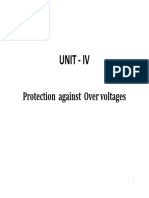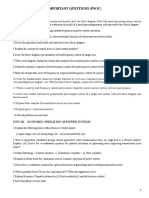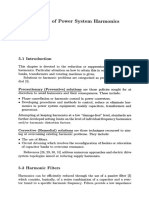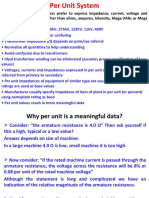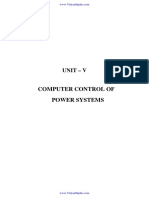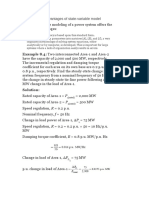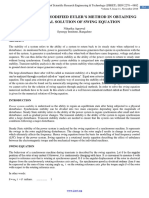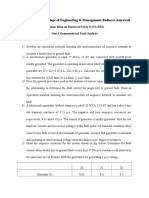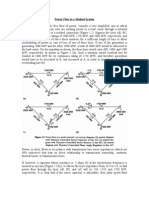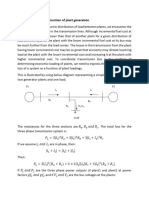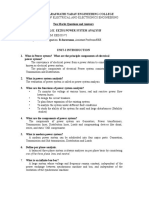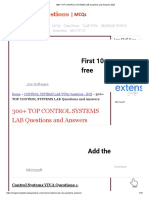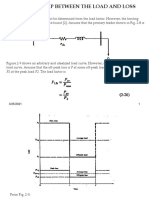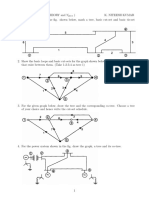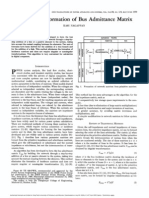100% found this document useful (1 vote)
1K views3 pagesYsus Matrix Formation Methods
1. There are two methods to form the bus admittance matrix (Ysus): direct inspection and singular transformation.
2. The direct inspection method involves identifying the total admittance connected to each node.
3. The singular transformation method uses the bus incidence matrix and the primitive admittance matrix to calculate Ysus. It is used when there is mutual coupling between nodes.
Uploaded by
sanjay AdhikariCopyright
© © All Rights Reserved
We take content rights seriously. If you suspect this is your content, claim it here.
Available Formats
Download as PDF, TXT or read online on Scribd
100% found this document useful (1 vote)
1K views3 pagesYsus Matrix Formation Methods
1. There are two methods to form the bus admittance matrix (Ysus): direct inspection and singular transformation.
2. The direct inspection method involves identifying the total admittance connected to each node.
3. The singular transformation method uses the bus incidence matrix and the primitive admittance matrix to calculate Ysus. It is used when there is mutual coupling between nodes.
Uploaded by
sanjay AdhikariCopyright
© © All Rights Reserved
We take content rights seriously. If you suspect this is your content, claim it here.
Available Formats
Download as PDF, TXT or read online on Scribd
/ 3






